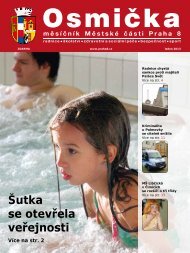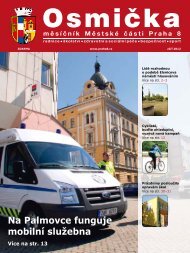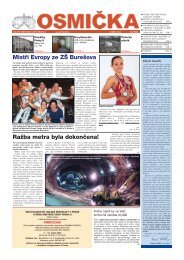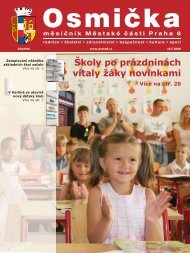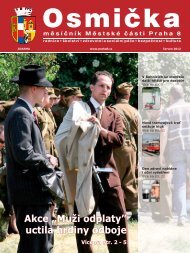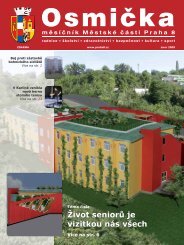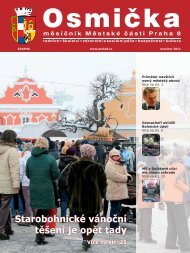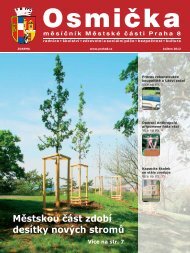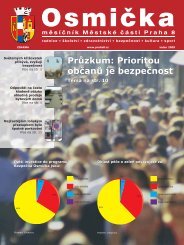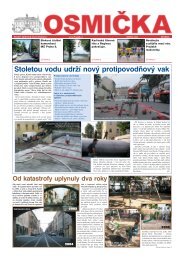You also want an ePaper? Increase the reach of your titles
YUMPU automatically turns print PDFs into web optimized ePapers that Google loves.
The Jewish entrepreneurial family came to Bohemia from Austria<br />
around the middle of the 19th century. This side of the family was<br />
founded by wholesaler and industrial magnate Moritz Grab (1810<br />
–1895), though the most prominent member of the family was his<br />
son Hermann Grab (1843–1900), who contributed significantly to<br />
industrial development in Libeň. He entered the business in Libeň<br />
as a director of the M. Grab synové family operation. Around 1876<br />
he and his brother Josef bought the Košinka farmstead (House<br />
No. 106) where he established a large oilcloth factory in 1879–1880.<br />
Grab’s imperial and royal leatherette, oilcloth and carpet monopoly<br />
factory was the largest of its kind in the Austro-Hungarian monarchy<br />
toward the end of the 19th century.<br />
The family villa underwent extensive renovation in 1928–1929 that<br />
gave it its present form. The original villa had two floors with a smaller<br />
ground plan. The renovation included an addition to the second<br />
floor and the garret and the building were extended north along<br />
the entire longitudinal line. The result of the alteration was a twostorey<br />
building with a cellar and a garret with pan-and-roll roofing,<br />
dormer windows and receding pentiled mansard walls. The massive<br />
attic railing with terraces on the second floor is decorated with sculptures<br />
on the south and west sides. Above the north entrance is a large<br />
terrace with a decorative railing with a balustrade and two statues<br />
of angels holding lanterns. The richest decorations can be found on<br />
the western frontage. High Ionic pilaster orders connect the ground<br />
floor to the first storey and the whole length of the facade is bordered<br />
with a ground terrace with a designed railing and a balustrade decorated<br />
with lanterns. The terrace is divided in the middle by a staircase<br />
and a buttress creating an entrance (a loggia) to the music room. It is<br />
intersected by two high Ionic columns on a square base bearing a second<br />
floor balcony. Above the columns, on the attic railing, is a richly<br />
decorated relief coat of arms with statues as shield bearers.<br />
When Emanuel Grab died in 1932, Dr. Hugo Grab became the<br />
sole owner of the villa. In 1936, House Number <strong>502</strong> together with<br />
the garden and a gardener’s house were rented to the head teacher,<br />
Josefina Victoriusová-Mockerová, who established a girls’ home<br />
on the site, principally for well-to-do boarders.<br />
In 1939, compulsory administration was imposed on the property<br />
of Dr. Max Josef Grab and the inheritance of Dr. Hugo Grab. Under<br />
the German occupation the entire real estate was confiscated as Jewish<br />
property by the Gestapo and the Reich Protector charged Adalbert<br />
Lederer with its administration in 1943.<br />
The building was then used by the Hitler Youth – Hitlerjugend.<br />
During the air raid of the allied Anglo-American forces on Vysočany<br />
on 25 March 1945, the Košinka farmstead was hit by four bombs.<br />
The villa was also partly damaged by bullets during the Prague<br />
Uprising, when an exchange of gunfire between members of the<br />
Hitlerjugend and Czech patriots took place there.<br />
After the Second World War the property of racially persecuted<br />
Austrian nationals that was considered alien property was subjected<br />
to the national administration without their participation. Based on



